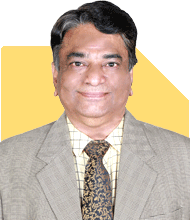On 2023 March I have taken edelweise lic of 525000/ year for 12 year scheme but after one year premium I lost my job and not capable for. 2 nd primium and finance problem so request company to return my primium but company refused so what can I do ?
Ans: First, I want to acknowledge your situation and empathize with the financial stress you're experiencing. Losing a job and dealing with an unexpected financial burden is challenging. However, there are steps you can take to manage your current predicament and make informed decisions moving forward.
Evaluating Your Policy
You mentioned that you purchased an Edelweiss LIC policy with an annual premium of Rs 5,25,000. Unfortunately, you have lost your job and cannot pay the second premium. You've also requested a refund, but the company has refused.
In India, insurance policies, including LIC, typically have strict terms regarding premium payments and refunds. Generally, if the policy lapses due to non-payment of premiums, the insurer may not refund the premium paid.
Surrendering the Policy
If you cannot continue with the policy, surrendering it might be an option. Surrendering a policy before the stipulated period usually results in a significant loss, as the surrender value is often much lower than the total premiums paid. However, it might be better than letting the policy lapse without any value.
Check with your insurer about the surrender value and the exact procedure for surrendering the policy. Ensure you understand the financial implications, including any penalties or fees.
Exploring Policy Loan Options
Some insurance policies offer the option to take a loan against the policy's surrender value. This might be a viable short-term solution to meet your financial needs without completely losing the benefits of the policy.
Enquire with Edelweiss LIC if a policy loan is available and assess the terms, including interest rates and repayment conditions. This can provide immediate financial relief while keeping the policy in force.
Considering the Free Look Period
When you buy an insurance policy, there is a "free look period," usually 15 days from the date of receipt of the policy During this period, you can review the policy terms and conditions. If you find them unsatisfactory, you can return the policy and get a refund of the premium paid, minus some nominal charges.
If you are still within this period, you can leverage this option. However, it seems you might have already passed this window. For future reference, always utilise this period to ensure the policy suits your needs.
Budgeting and Financial Planning
To navigate through your current financial crunch, creating a detailed budget is crucial. List all your income sources, savings, and expenses. Identify areas where you can cut costs or defer payments.
This budget will give you a clear picture of your financial status and help you prioritize your expenses. Focus on essential needs and avoid any unnecessary expenditures.
Seeking Alternative Income Sources
Since you've lost your job, exploring alternative income sources is essential. Consider part-time or freelance work, which can provide interim financial support. Online platforms and local opportunities might offer suitable options based on your skills and experience.
Networking with former colleagues, friends, and industry contacts can also open up new job opportunities. Inform them about your current situation and actively seek their assistance in finding suitable job openings.
Debt Management
If you have existing debts, managing them efficiently is vital. Contact your lenders and explain your situation. Some lenders might offer deferment or restructuring options for your loans.
Prioritize high-interest debts and aim to pay them off first. Consider consolidating your debts if it reduces your overall interest burden and simplifies repayments.
Emergency Fund
If you have an emergency fund, this is the time to utilize it. An emergency fund is designed for unforeseen circumstances like job loss. Ideally, it should cover 3 to 6 months of living expenses.
If you don’t have one, consider starting to build one as soon as you stabilize your finances. Having an emergency fund provides a financial cushion for future unexpected situations.
Financial Assistance and Support
Explore government schemes and financial assistance programs that might be available for unemployed individuals. Some organizations and non-profits offer financial aid or support for those in need.
Seek advice from a certified financial planner who can provide tailored guidance based on your specific situation. They can help you create a recovery plan and suggest investment strategies for future stability.
Exploring Other Investment Options
While dealing with your current policy and financial issues, it's also a good time to evaluate other investment options. Investing in mutual funds through SIPs (Systematic Investment Plans) can provide better returns and flexibility compared to traditional insurance policies.
SIPs allow you to invest a fixed amount regularly, even with a limited budget. They offer the benefit of rupee cost averaging and potential for higher returns over the long term.
Benefits of Actively Managed Funds
Instead of investing in index funds, consider actively managed funds. These funds are managed by professional fund managers who aim to outperform the market.
Actively managed funds can adapt to changing market conditions and potentially offer better returns. The expertise of fund managers and their ability to select high-performing stocks can provide a competitive edge.
Advantages of Regular Funds
While direct funds have lower expense ratios, regular funds offer the benefit of professional guidance from certified financial planners. Investing through a planner ensures you receive personalized advice and continuous portfolio monitoring.
Regular funds also provide access to additional services and support, helping you make informed investment decisions. This professional guidance can be invaluable, especially in complex financial situations.
Final Insights
Your current financial challenges require careful planning and informed decisions. By evaluating your insurance policy options, budgeting effectively, exploring alternative income sources, and seeking professional guidance, you can navigate this difficult period.
Investing in mutual funds through SIPs and opting for actively managed funds can provide better financial growth. Remember, seeking advice from a certified financial planner ensures you receive tailored and professional support.
Take proactive steps to manage your finances, and with time, you can overcome these challenges and achieve financial stability.
Best Regards,
K. Ramalingam, MBA, CFP
Chief Financial Planner
www.holisticinvestment.in



























